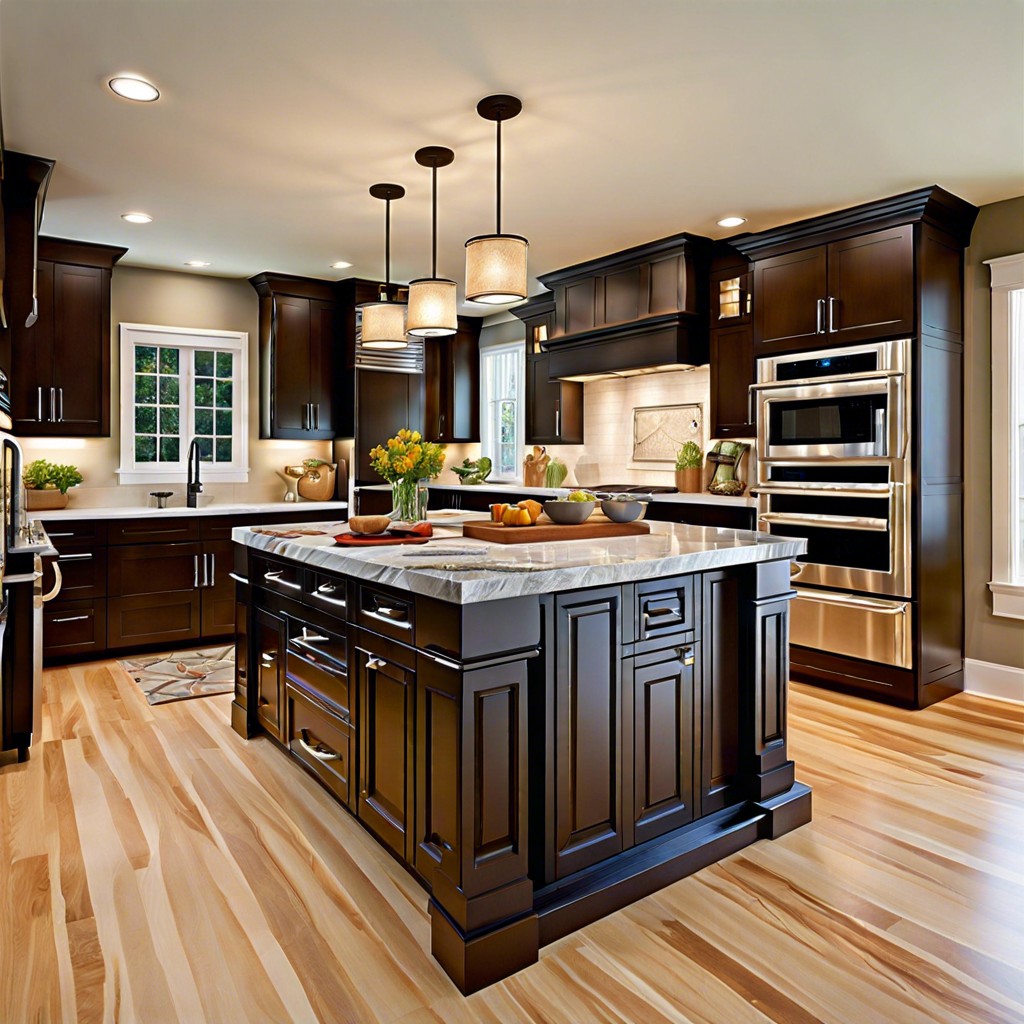Last updated on
Discover the factors influencing the cost of a kitchen island and how to make a cost-effective choice for your home renovation.
Key takeaways:
- Prefab islands range from 0 to ,000.
- Custom islands start around ,000 and can be much pricier.
- Prefab islands offer quick installation and cost savings.
- Custom islands are personalized and made to measure.
- Materials, customization, size, and labor impact island costs.
What's Inside
Kitchen Island Cost By Type

Prefab islands are your go-to if you’re looking for a quick and cost-effective solution. These mass-produced units generally range from $200 to $2,000 and offer a variety of styles to choose from.
In contrast, custom islands are significantly pricier due to the personalized design and craftsmanship involved. Prices start around $3,000 and can soar well into the tens of thousands, depending on the complexity and materials selected.
When considering a prefab, remember you’ll be working within the confines of pre-set designs and dimensions, which might limit your ability to match your island perfectly with your kitchen’s existing aesthetic.
Opting for custom, while more expensive, affords the luxury of tailoring every detail to fit your space and style. It’s like commissioning a suit; it’s made to measure for your kitchen’s specific needs and tastes.
Remember, the difference in cost is also a reflection of longevity and quality. Prefab islands might cut corners with lower-quality materials, whereas custom pieces often feature finer materials and superior construction that can stand the test of time.
Prefab
Stepping into the world of prefab kitchen islands, these off-the-shelf solutions are a wallet-friendly ticket to functionality and style. They come ready-made from manufacturers and are great if you’re aiming for a quick update to your kitchen without the lengthy time investment of a custom design.
With prices often ranging from a few hundred dollars to over a thousand, they cater to a variety of budgets. Materials are usually less expensive ones such as MDF or laminates, but that doesn’t stop them from offering a sleek look to suit modern aesthetics.
Sizes are predetermined, so they are best for kitchens with standard dimensions. For those without complex kitchen layouts or specific material preferences, these units can roll right off the delivery truck and into the heart of the kitchen with minimal fuss.
A key point to remember is their straightforward installation process, often a simple case of positioning and securing to the floor, which means you save not only on the unit but also on labor costs. However, bear in mind that these islands won’t boost your home’s value the same way a custom piece might, due to their standard designs and materials.
Custom
Custom kitchen islands are the epitome of personalization in home design. They’re tailored to fit specific tastes, kitchen layouts, and functional needs. The unique nature means you choose every detail, from materials to features.
Opting for a custom island can significantly impact your budget due to the craftsmanship required. Hardwoods and high-end stone countertops can elevate costs, but they also bring unmatched durability and style. The inclusion of luxurious features like built-in wine coolers or specialty storage can also contribute to a higher price point.
Labor charges for custom pieces may be steep as they demand more time and expertise to build and install. However, the cost is partially offset by the perfect fit and efficient use of space a custom island provides, often making the most of every square inch.
Remember, the complexity of your design not only affects the cost but also the timeline for completion, so plan for a longer project duration with custom work. A simpler design will be easier on the wallet and the clock.
Factors That Affect Kitchen Island Costs
Selecting the right materials can significantly influence your budget. Common options range from laminate, which is cost-effective, to high-end granite or marble that comes with a steeper price tag. Consider durability, maintenance, and aesthetics when choosing the material that fits both your needs and budget.
Customization levels can turn a standard island into a standout feature in your kitchen. However, the more tailored the design, such as adding built-in appliances or specific dimensions to fit your space, the higher the cost will climb due to increased labor and materials.
Size is a straightforward factor: larger islands require more materials and potentially more complex installation processes, leading to higher costs. Assess how much counter space and storage you need to balance functionality with financial constraints.
Labor rates should never be overlooked. These costs can vary widely depending on where you live and the skill level of the tradespeople you hire. Highly skilled professionals command higher fees, but the investment often translates to better quality and quicker completion times.
Keep these factors in balance to manage costs while creating a kitchen island that meets your functional needs and design preferences.
Materials
Selecting the right materials for your kitchen island is crucial, as they determine both the cost and the longevity of your investment. High-end materials like granite and quartz are popular for countertops, offering durability and a touch of luxury, but they do bump up the price. On the other hand, laminate and tile can be cost-effective without sacrificing style.
When it comes to the body of the island, hardwood is often a go-to for its strength and aesthetic appeal. However, materials like MDF or particle board can mimic the look of wood for a fraction of the cost and are worth considering if you’re on a tighter budget.
Don’t forget about the finishing touches. Hardware and fixtures like drawer pulls and faucets can range from reasonably priced to quite expensive. Brushed nickel and chrome are generally more affordable, while oil-rubbed bronze or copper tend to carry a premium.
Remember, balancing the materials you desire with the ones that fit your budget will ensure a kitchen island that’s both functional and a focal point of your home.




